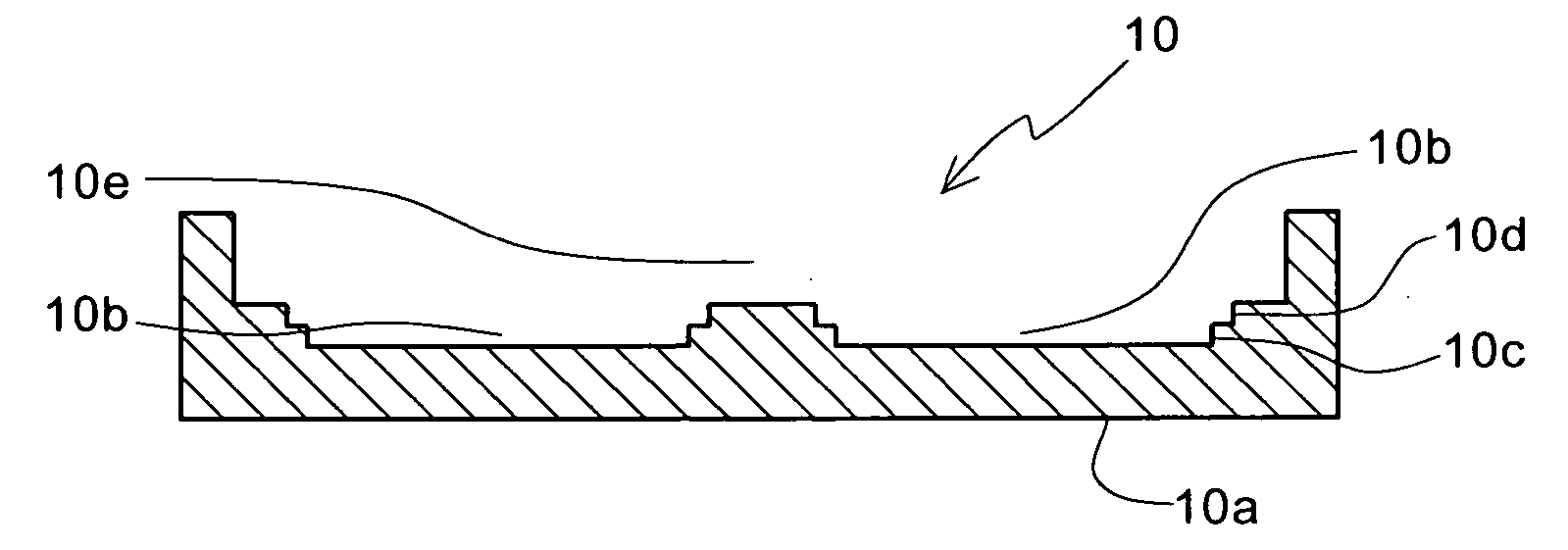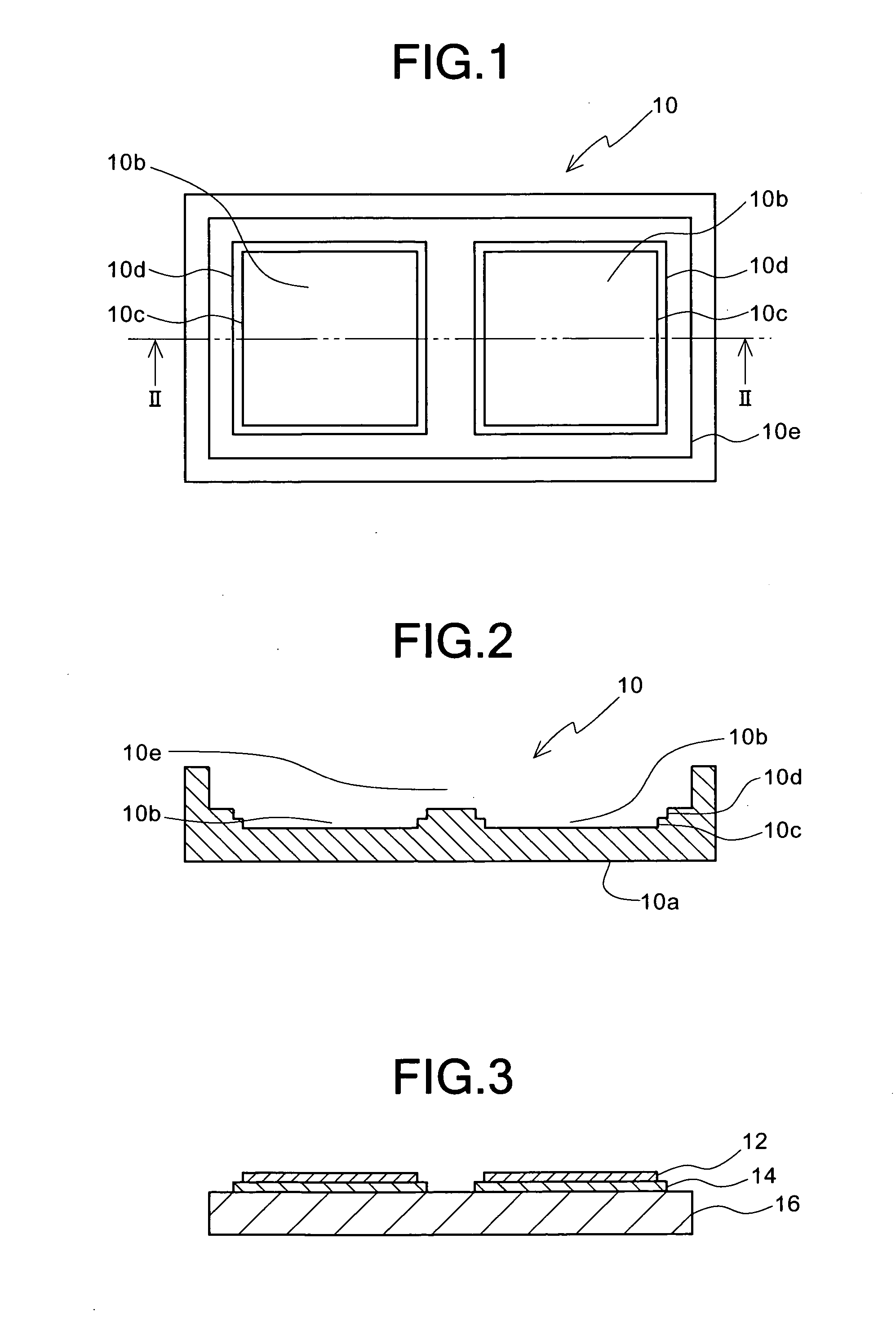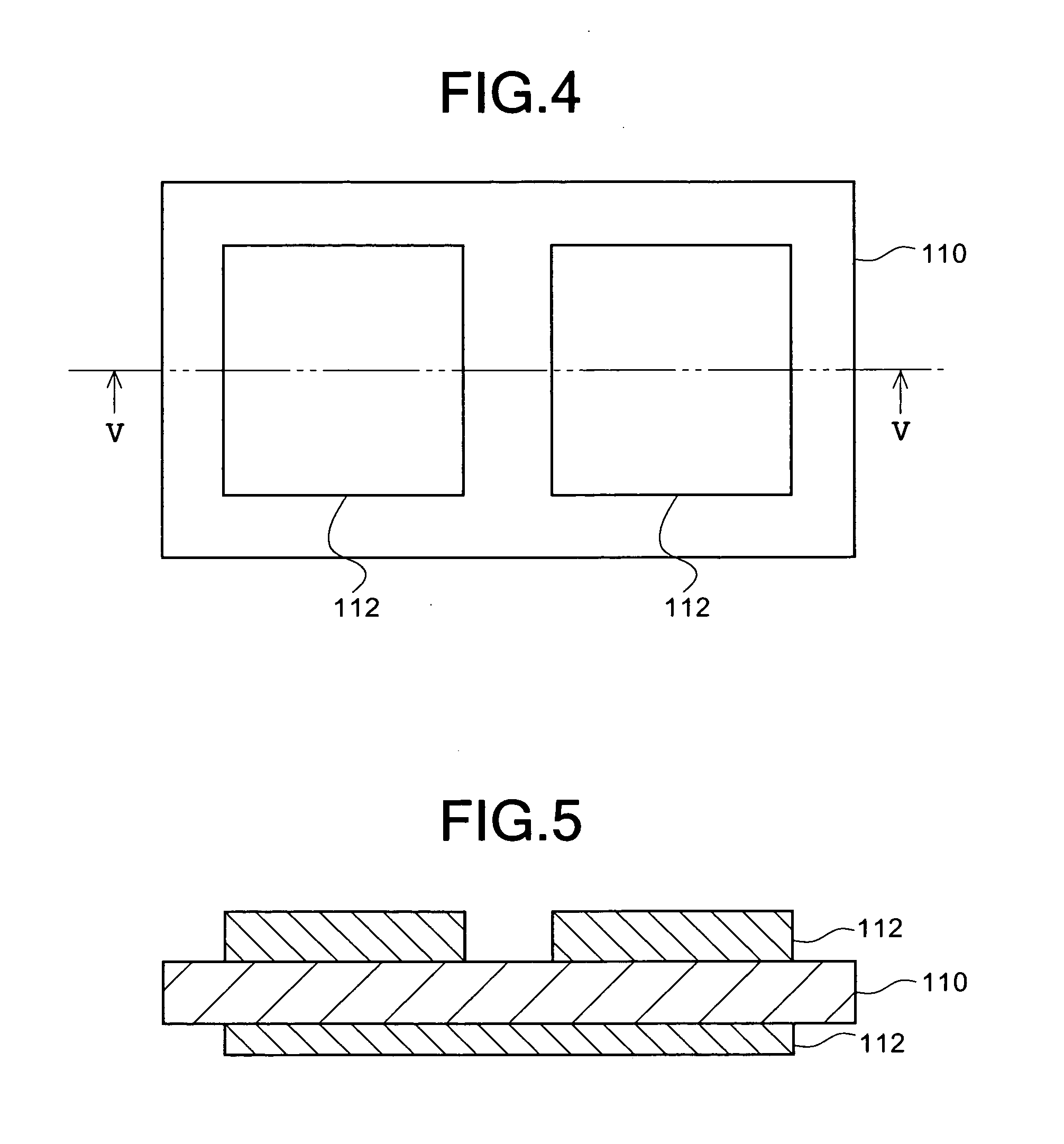Aluminum/ceramic bonding substrate and method for producing same
a technology of aluminum/ceramic bonding and substrate, which is applied in the direction of natural mineral layered products, metallic pattern materials, solid-state devices, etc., can solve the problems of difficult control of aluminum grain size, increased grain size, and increased production cost, so as to reduce the variation in grain size distribution, prevent cracks, and reduce the effect of aluminum grain siz
- Summary
- Abstract
- Description
- Claims
- Application Information
AI Technical Summary
Benefits of technology
Problems solved by technology
Method used
Image
Examples
example 1
[0042] First, as shown in FIGS. 1 and 2, a carbon mold having a lower mold member 10 was prepared as a mold. The lower mold member 10 has a bottom portion 10a having a substantially rectangular planar shape. The top surface of the bottom portion 10a of the lower mold member 10 has two recessed portions 10b which are spaced from each others by 10 mm and each of which has a step-wise extending side wall. Each of the recessed portions 10b comprises: an aluminum plate forming portion 10c capable of forming an aluminum plate having a size of 39 mm×39 mm×0.4 mm; and a ceramic substrate housing portion 10d which is formed above the aluminum plate forming portion 10c so as to be adjacent thereto and which substantially has the same shape and size as those of a ceramic substrate having a size of 40 mm×40 mm×0.635 mm so as to be capable of housing therein the ceramic substrate. When an upper mold member (not shown) having a substantially rectangular planar shape is put on the lower mold membe...
example 2
[0050] With respect to a bonding article obtained by the same method as that in Example 1, except that the same Al—Ti—B alloy as that in Example 1 was added so that the content of Ti was 0.1 wt %, the same evaluation as that in Example 1 was carried out. As a result, the grain size of aluminum on the reverse of the aluminum base plate was in the range of from about 3 mm to about 5 mm. In addition, no bonding failure was detected on the bonding interface between the aluminum circuit plate and the ceramic substrate and on the bonding interface between the ceramic substrate and the aluminum base plate, and no crack was observed on the ceramic substrate. In addition, the variation in warpage before and after heating was so small as to be in the range of −20 μm to 30 μm. Also after heat cycles were repeatedly carried out three thousands times, no bonding failure was detected, and no crack was observed on the ceramic substrate. Moreover, the thermal conductivity of a sample cut out of the...
example 3
[0051] With respect to a bonding article obtained by the same method as that in Example 1, except that calcium (Ca) was added in place of the Al—Ti—B alloy, the same evaluation as that in Example 1 was carried out. As a result, the grain size of aluminum on the reverse of the aluminum base plate was in the range of from about 5 mm to about 10 mm. In addition, no bonding failure was detected on the bonding interface between the aluminum circuit plate and the ceramic substrate and on the bonding interface between the ceramic substrate and the aluminum base plate, and no crack was observed on the ceramic substrate. In addition, the variation in warpage before and after heating was in the range of −50 μm to 50 μm and was not so great. Also after heat cycles were repeatedly carried out three thousands times, no bonding failure was detected, and no crack was observed on the ceramic substrate. Moreover, the thermal conductivity of a sample cut out of the obtained bonding article was 214 W / ...
PUM
| Property | Measurement | Unit |
|---|---|---|
| grain size | aaaaa | aaaaa |
| grain size | aaaaa | aaaaa |
| thickness | aaaaa | aaaaa |
Abstract
Description
Claims
Application Information
 Login to View More
Login to View More - R&D
- Intellectual Property
- Life Sciences
- Materials
- Tech Scout
- Unparalleled Data Quality
- Higher Quality Content
- 60% Fewer Hallucinations
Browse by: Latest US Patents, China's latest patents, Technical Efficacy Thesaurus, Application Domain, Technology Topic, Popular Technical Reports.
© 2025 PatSnap. All rights reserved.Legal|Privacy policy|Modern Slavery Act Transparency Statement|Sitemap|About US| Contact US: help@patsnap.com



